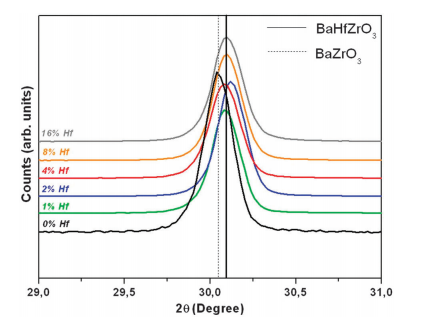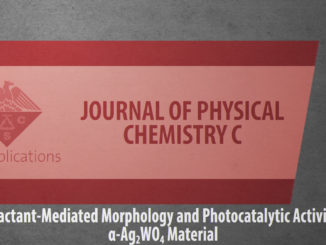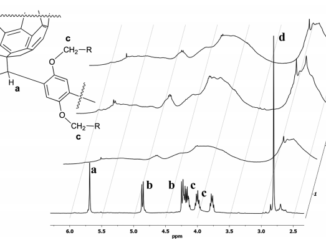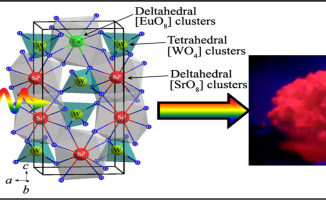
Fingerprints of short-range and long-range structure in BaZr1-xHfxO3 solid solutions: an experimental and theoretical study
Abstract: A microwave-assisted hydrothermal method was applied to synthesize BaZr1-xHfxO3, (BZHO) solid solutions at a low temperature, 140 degrees C, and relatively short times, 160 min. The detailed features of the crystal structure, at both short and long ranges, as well as the crystal chemistry doping process, are extensively analysed. X-ray diffraction measurements and Raman spectroscopy have been used to confirm that pure and Hf-doped BZO materials present a cubic structure. Extended X-ray absorption fine structure (EXAFS) spectra indicate that Hf4+ ions have replaced the Zr4+ ions on the 6-fold coordination and a subsequent change on the Ba2+ 12-fold coordination can be sensed. X-ray absorption near-edge structure (XANES) spectroscopy measurements reveal a local symmetry breaking process, associated to overlap of the 4d-2p and 5d-2p orbitals of Zr-O and Hf-O bonds, respectively. Field emission scanning electron microscopy (FE-SEM) and high resolution transmission electron microscopy (HRTEM) show the mesocrystalline nature of self-assembled BZHO nanoparticles under a dodecahedron shape. In addition first principle calculations were performed to complement the experimental data. The analysis of the band structures and density of states of the undoped BZO and doped BZHO host lattice allow deep insight into the main electronic features. The theoretical results help us to find a correlation between simulated and experimental Raman modes and allow a more substantial interpretation of crystal structure.
Author(s): Fassbender, RU; Lilge, TS; Cava, S; Andres, J; da Silva, LF; Mastelaro, VR; Longo, E; Moreira, ML
PHYSICAL CHEMISTRY CHEMICAL PHYSICS
Volume: 17 Pages: 11341-11349 Published: 2015
DOI: 10.1039/c4cp05448b




